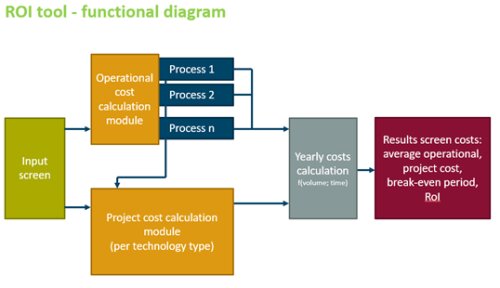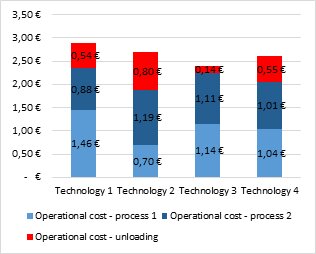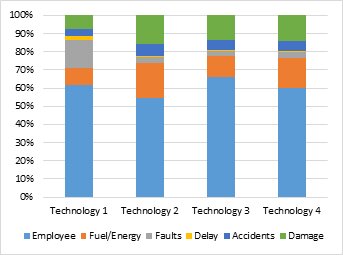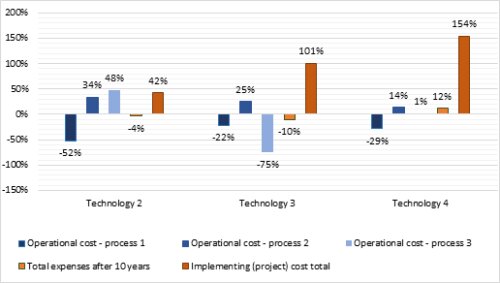TPR tool: calculating the RoI of new technology and ICT applications used in logistics and port operations
New (IT) technologies like automation, blockchain, big data or AI are implemented or under discussion to be implemented at logistics or port organizations. These technologies or related applications require a great deal of effort and risk to be purchased. In addition, their integration in the contemporary processes often involves a high cost, long implementation time and unforeseen risks that are quantified in development costs. Moreover, some of these new technologies or systems’ specifications are not flexible to meet the needs defined by the market and new adaptions are needed. The decision responsibles choose based on short-term estimations and information available through one-time market prospects. Therefore, as shown also by recent research, technology suppliers can adopt an opportunistic behaviour and charge more for their products.
TPR’s RoI tool is a conceptual modular model that can be adapted to calculate economic indicators necessary in the decision process of implementing new technologies. The functional diagram of this conceptual tool is presented below.

TPR’s ROI concept disposes of the following screens. A first input screen serves to fill in the general details regarding operations and the technologies considered to be compared. After making an inventory of the logistics processes that are impacted by the implementation of the new technologies, a set of individual operational cost calculation modules are defined. These modules allow to calculate, for each process, operational cost elements that are related to employees, fuel/energy, faults, delays, accidents, damage etc costs. The project calculation module retrieves data from the input screen and calculates the total costs of deploying each technology according to the following elements: implementation cost, cost to 3rd parties, cost of premium functionalities or other costs associated to technology risks. The yearly cost calculation module uses input from the previous modules to calculate yearly costs as a function of volumes handled and time in use. Finally, main economic elements are calculated as main results of the tool for each considered technology are as follows: the average operational cost (per process), the cost structure of the implementation costs, the break-even period or the RoI. These results are also used to calculate per technology relative variations of each cost element to ease the comparative analysis.



Hence, the TPR’s RoI tool uses both operational and technological specification as input to calculate a comprehensive set of economic elements. These elements are used to compare new technologies to be introduced in logistics processes, planning, loading/unloading activities, or predictions operations. TPR’s RoI tool is designed to be used by decision makers or managers in logistics operations, but also in applications of research projects that calculate the cost-effectiveness of implementing new technologies.
View the full manual on the ROI tool as applied to Optimal Truck Charging.
View the full manual on the RIO tool as applied to Self Service in Logistics.